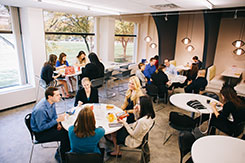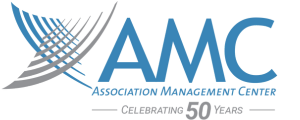
5 Steps to Special Interest Groups Revitalization
The association world is constantly changing and it’s key to make sure each segment of your association continues to expand and adjust with the current market climate. Special Interest Groups (SIGs) are an important part of any association, and it is essential to revitalize SIG meetings that have become stale over time. The Administrator/Coordinator SIG at Association Management Center recently went through this process and, by using the steps below, had amazing results. The SIG boosted attendance by 30 percent, had increased member engagement, received tons of positive feedback, and had much happier members overall. Consider the following to revamp your SIG today:
Know Where You Can Improve
First, take a look at the group as a whole and find the areas that need enhancement. Then, establish two or three goals to improve these areas, making sure they can be completed within a short amount of time. Setting goals forces the SIG to focus on specific items and can be used as a tool for measuring progress.
Case Example: At the beginning of the year, the Administrator/Coordinator SIG Co-Chairs reviewed the SIG’s agendas, minutes, and end-of-year survey from the previous year. It was clear that attendance was low and meeting topics were being repeated year after year.
Develop Beneficial Topics for Every Member
Members of SIGs often have diverse job titles, experiences, and backgrounds. It is crucial to make sure everyone who comes to the SIG meeting benefits from the topic discussed. No one enjoys listening to presentations that don’t apply to their current role, or hearing about the same topics that have been discussed time and time again! Each SIG member in attendance should walk away with more knowledge than they had walking in.
Case Example: The Administrator/Coordinator SIG Co-Chairs distributed a survey at the first SIG meeting of the year regarding meeting topics. The survey listed 20 potential topics and SIG members were asked to rank each topic according to their own interests. The highest ranking topics were selected as the year’s focus.
Support Member Attendance
After topics have been finalized for the SIG meetings, shift the focus to getting the members to attend! Be sure to select an appropriate meeting frequency, as well as the best date and time for all members’ schedules. Send calendar appointments well in advance, so members can be aware of the meeting early-on. In addition, always verify listservs are up-to-date and email addresses are current, so no one is left out who could benefit from the SIG!
Case Example: The Administrator/Coordinator SIG Co-Chairs found their members had extremely busy schedules and it made more sense to meet bi-monthly instead of monthly. They also made a point to review the listserv each month, which ensured notifications were being sent to all the correct people.
Build Well-Rounded Agendas
 After you get SIG members to the meeting, you want to make sure their time is spent productively and all members are engaged in the topic. Vary your delivery methods at every meeting; this keeps members on their toes and promotes interactivity. Integrate relevant and relatable media in order to increase information retention.
After you get SIG members to the meeting, you want to make sure their time is spent productively and all members are engaged in the topic. Vary your delivery methods at every meeting; this keeps members on their toes and promotes interactivity. Integrate relevant and relatable media in order to increase information retention.
Case Example: When building the agendas for each Administrator/Coordinator SIG meeting, the Co-Chairs incorporated current event and pop culture references, a group activity, and either a panel or group discussion. These different agenda components created maximum potential for participation and productivity.
Girls (and Boys) Just Want to Have FUN!
Everyone is more inclined to participate in an activity they know will be fun. Create an environment members want to be in, while maintaining the professionalism of the SIG. By creating a fun atmosphere, members feel more open to sharing their thoughts and concerns. Remember, ultimately, the SIG members will choose to attend the meeting or not. There’s a higher likelihood of attendance if an element of fun is expected.
Case Example: The Administrator/Coordinator SIG Co-Chairs planned a theme around each meeting of the year. In July, a “Red, White, and Blue” theme gave way to firecracker popsicles, strawberries, blueberries, and cream cheese fruit dip. This establishes a more laid-back atmosphere where conversation is comfortable and members can connect with each other.


